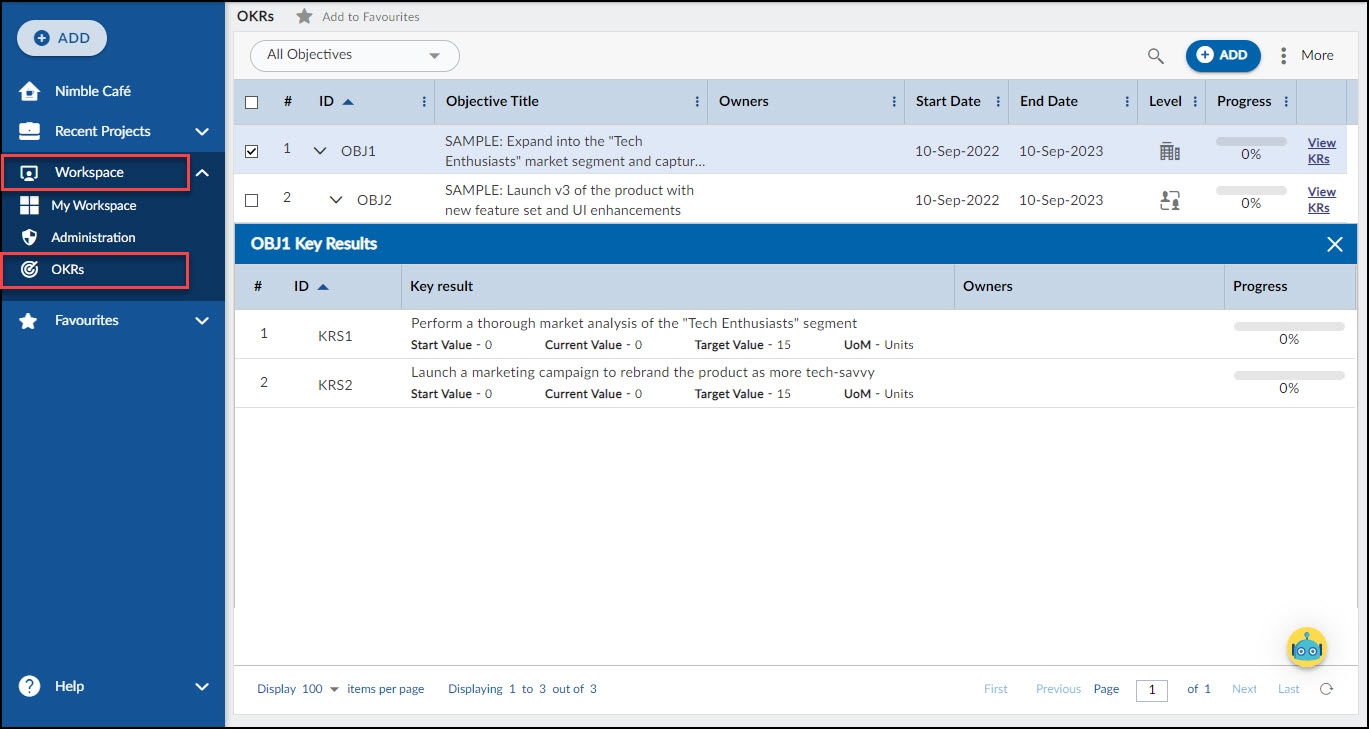Start with the video first to get a better grasp of the topic!
|
Skip Ahead to: |
Overview
Objective and Key Results (OKRs) help to establish and clarify goals or objectives for an organization, department, project/team, or person. They not only clearly state what the goal is, but they also provide specific details that allow you to measure the success of the goal.
The O stands for objective and defines what needs to be achieved. It describes the desired result or outcome, such as an increase in customer retention, or an improvement in the employee onboarding process. KR stands for key results. These are the measurable outcomes that define when the objective has been met. For example, if your objective is to improve customer retention, then the key result might be to have a 90 percent customer satisfaction rating by the end of the first quarter.
In other words, Objectives define what needs to be achieved and describe the desired outcome. Key results define how you’ll know whether or not you’ve met your objective.
Different Levels of OKR
In Nimble, you can define your OKR at the given 4 levels-
- Organization-level
- Department-level
- Team-level
- Individual-level
Organization level OKR
Organization-level OKRs are commonly shared across an organization so that everyone is clear on the company’s goals. They are usually updated on an annual basis to help drive the organization in the direction it wants to go. These high-level OKRs support the mission of the organization. Department-level and project-level OKRs should support and be aligned with organization-level OKRs.
Department level OKR
Department-level OKRs, support the company’s broader OKRs and help drive team performance.
Departments may also develop OKRs that are more specific to their job function. For example, the company-level key result “sales and support channels are available 24/7 by the end of the year,” could lead to a related sales department objective like increasing the sales team presence nationwide. And the key result: new sales offices are open in 10 cities by the end of the year.
Team level OKR
Project-level OKRs are set during the project’s initiation phase to help define measurable project goals. They’re tracked throughout the planning and execution stages to measure project success. Project-level OKRs need to align with and support both company and department-level OKRs.
Individual level OKR
Individual-level OKRs are created by individual team members and are accessible to them only.
Navigation
In the left navigation panel, expand the Workspace menu and select the OKRs menu. The OKR screen appears where you can see a list of sample objectives. You can create your own objectives, create key results and sub-key results and perform other operations as mentioned below.
Benefits of using OKR Template
- OKRs help organizations align their teams, departments, and overall strategy by setting clear and measurable objectives.
- Set and prioritize goals based on their strategic priorities, ensuring that teams are focusing on the most impactful objectives and making the best use of their time and resources.
- By setting and regularly tracking progress toward objectives, teams are able to understand the progress of their peers, and it helps to foster a culture of collaboration.
Card Types List
- Objective: A specific, time-bound goal that an individual or team wants to achieve. Objectives are generally ambitious and challenge everyone to perform their best.
- Key Result: A specific, time-bound outcome that aligns with and supports an objective. It provides a meaningful, quantifiable metric to demonstrate progress toward a goal.
- Sub Key Result: A separate actionable or a milestone along the path to achieving a Key Result. A sub-key result can be linked to a project to highlight the link between the strategy and actions being undertaken to achieve it.

